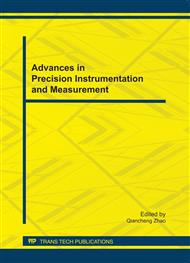p.92
p.97
p.102
p.109
p.115
p.119
p.124
p.128
p.134
Polygon-Division Method to Measure Wound Area of Human Body Surface
Abstract:
When human’s body been injured. The value of length and area of wound, rotation angle range of joint are the important references for forensic judge. This paper presents a Polygon-Division method to measure human body surface wound area. This method based on the photo image of wound region and with computer aided. For experiment, I design and implement a software program. The result of experiment reached the demand of precision of forensic judge. The program based this method is more simple to operate and more efficient than other programs, and this is a practical and simple method to measure human body surface wounded area.
Info:
Periodical:
Pages:
115-118
Citation:
Online since:
September 2011
Authors:
Price:
Сopyright:
© 2012 Trans Tech Publications Ltd. All Rights Reserved
Share:
Citation:


